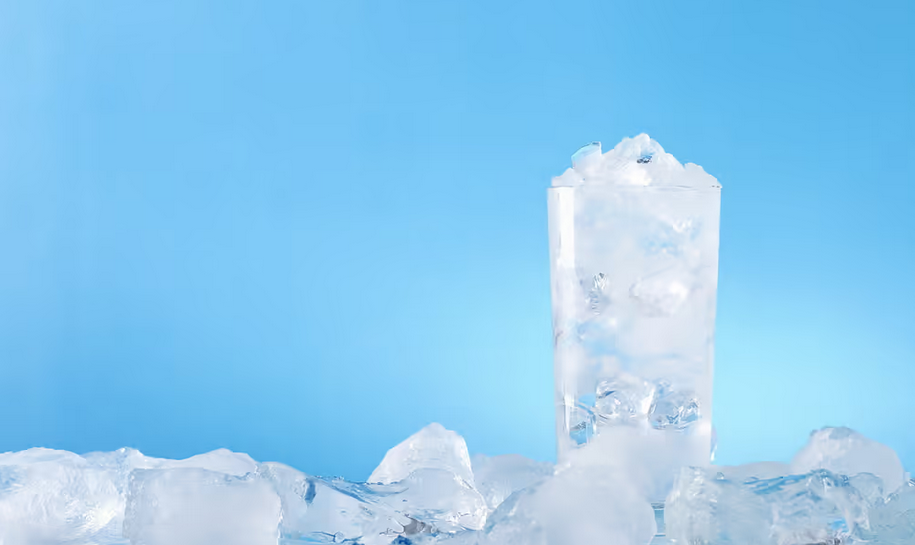Chewing ice is a very common habit that isn’t impossible to break. Some people do this mindlessly after finishing a drink, while others do it to cool off in the summer heat. Although ice is simply frozen water with zero sugar, chewing it can still cause severe damage to your tooth enamel.
chewing ice can be bad for your teeth. While ice is just frozen water and contains no sugar or other additives that can harm your teeth, the hard, brittle texture of ice can cause damage to your teeth over time.
When you chew on ice, you are exposing your teeth to extreme temperature changes and putting pressure on them. This can cause microscopic cracks in your tooth enamel, which can eventually lead to larger cracks or even fractures. Chewing ice can also irritate the soft tissue inside your teeth, leading to tooth sensitivity or pain.
In addition to damaging your teeth, chewing ice can also damage dental work, such as fillings, crowns, or braces. It can also cause your jaw muscles to become tired and sore.
To protect your teeth, it’s best to avoid chewing on ice. If you have a habit of chewing ice and find it difficult to stop, you can try chewing sugarless gum instead or drinking water at room temperature. If you experience tooth sensitivity or pain after chewing ice, it’s important to see a dentist to assess any damage and provide treatment if necessary.
Why chewing ice can be dangerous

Breaking or chipping a tooth isn’t the only outcome of chewing ice. Often times, people will crack their tooth enamel without knowing it. This can lead to hot and cold sensitives, tooth pain, and ultimately a trip to see the dentist. Other results that can come from this are:
- Cracked filling
- Damaged Crown or Cap
- Broken Veneers
- Brackets falling off or broken wires for people who wear braces
Chewing ice can be dangerous for a few reasons:
- Temperature shock: When you chew on ice, the extreme cold temperature can shock your teeth and gums, causing them to contract and expand rapidly. This can weaken your teeth over time, making them more prone to cracks, chips, or fractures.
- Pressure and force: Chewing on hard, brittle ice requires a lot of force and pressure. This can cause small cracks to develop in your teeth, which can worsen over time and eventually lead to more serious damage.
- Irritation and inflammation: Chewing on ice can irritate the soft tissue inside your teeth, causing inflammation, sensitivity, or pain. This can also make your teeth more vulnerable to decay or infection.
- Damage to dental work: If you have dental work such as fillings, crowns, or braces, chewing on ice can damage or loosen them, which can be expensive and painful to repair.
Overall, it’s best to avoid chewing on ice to protect your teeth and gums. If you have a habit of chewing ice and find it difficult to stop, talk to your dentist or healthcare provider for tips and support.
The price tag that comes along with fixing some of these issues can add up to be quite pricey over time. Something as simple as filling a cavity may be the solution, but other times root canals and crown replacements are necessary to repair the damage done. Although there are much worse habits to have, as your local orthodontist we recommend breaking this as soon as you can! If you’re wearing braces or Invisalign, ice chewing can cause severe damage to brackets, wires, and aligner trays resulting in extra visits to our office. It is best if you can break this habit before pursuing orthodontic treatment.
Ways to break the habit of chewing ice
The best way to wean yourself away from ice chewing is by introducing some alternatives.
- Shaved Ice
- Slushies
- Small ice (sonic ice)
You can also begin by letting the ice melt in your mouth, teaching yourself to resist the urge to bite down. If the crunch is what you’re after though, try switching to something like celery or carrot sticks when you find yourself wanting to chew on some ice.
Pagophagia
Pagophagia is a medical term used to describe a compulsive desire to chew on ice. It is considered a type of pica, which is a condition where people crave and eat non-food items such as dirt, paper, or ice. Pagophagia is often associated with iron deficiency anemia, which is a condition where the body lacks enough iron to produce hemoglobin, a protein in red blood cells that carries oxygen to the body’s tissues. Iron deficiency anemia can cause a range of symptoms such as fatigue, weakness, dizziness, shortness of breath, and pale skin. Some studies suggest that chewing ice may help relieve the discomfort associated with iron deficiency anemia, as the cold temperature can numb the mouth and reduce inflammation. However, chewing ice is not a recommended treatment for anemia and may actually worsen the condition if it damages the teeth or irritates the gums. If you have a compulsive urge to chew ice or experience symptoms of anemia, it’s important to talk to your doctor or healthcare provider for proper diagnosis and treatment.
Did you know that the intense craving to chew on ice is sometimes categorized as pagophagia? This is due to a nutritional deficiency. Not everyone who loves chewing ice has pagophagia, but studies show that many people who have this desire have an underlying health issue that has not yet been resolved. Other symptoms typically accompany pagophagia, such as: dry, pale skin, headache, fatigue and dizziness. Many of these are tied to having an iron deficiency, although it is best to check with your doctor if your symptoms worsen or you suspect you have pagophagia.

